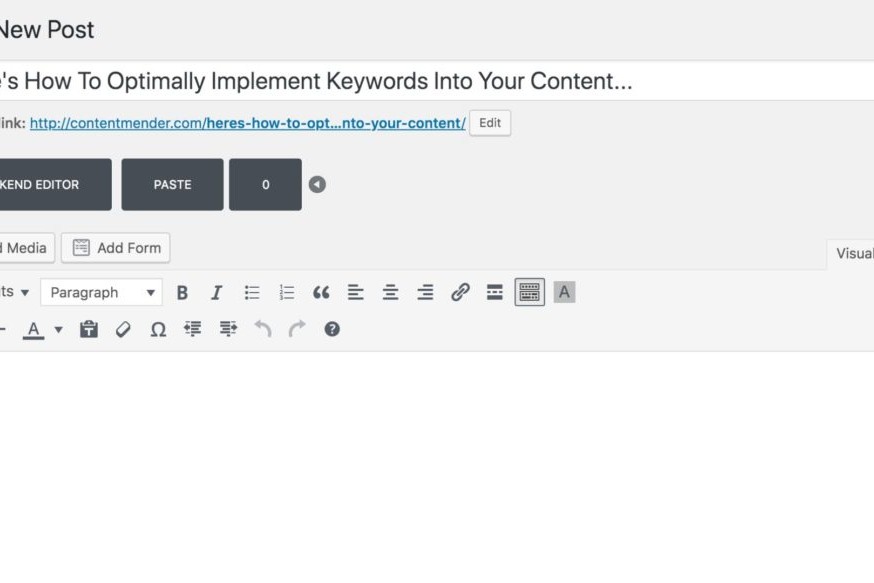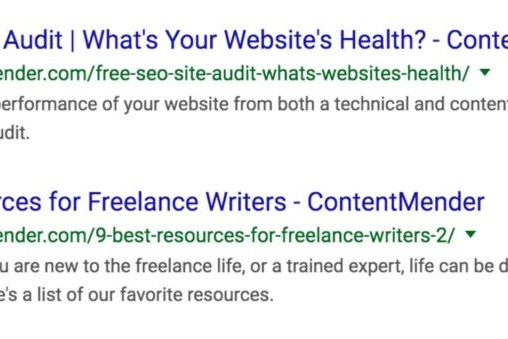When someone searches on Google or other search engines, the page title and meta description for your web page or blog provide the first impression.
The title is self-explanatory; it’s the main element of a SERP (Search Engine Results Page), typically a max of 60 characters (read – not words!). The meta description is that tiny description that helps influence a click to the article or page – all in a limited 160 characters (read again – not words).
These two quickly influence searchers on whether they will visit your website. And it all begins with the title, or as SEOs call it, a title tag. One of the essential parts of SEO involves optimizing your title tag for a keyword that people use for searching and also creating something engaging that influences a click. And with clicks arrives more ROI – something every website owner seeks.
What is an optimized title?
Just like a search engine determines whether the content is relevant, the title is subjected to the same scrutiny. The title, or, again, as SEOs call it, title tag, is also the first element that searchers see. An optimized title capitalizes on both factors – providing input for search engines about what the page is about (keywords) and engaging enough to result in a click-through for searchers.
An optimal title uses one or two “target” keywords but doesn’t let those keywords dominate the entire title. By target, we mean only using one or two main keywords for the whole article. Besides the content itself, the title sends the most prominent signal to search engines about the page’s purpose.
For example, this blog is optimized for “optimize title.” The reason we chose this target keyword is that it’s longtail, meaning it has a lower monthly search volume and not as much competition as a keyword like “blog titles” which has a larger search volume of 880. The latter would be harder to grab a higher ranking position. Why? The competition is huge, and many others have been around MUCH longer than us.
The goal is to have it rank high in the search, but the reader will ultimately decide if it is worth their time to continue.
What is the purpose of an optimized title?
The layout of the SERP (Search Engine Results Page) essentially requires a title to function as a headline would in a newspaper. It has to be snappy and relevant. It is designed to provide readers with just enough information to know that it pertains to their keyword search and entice them to continue.
It is essential to balance the title’s function and style in a manner that will actually attract readers. It cannot be too zealous or over the top, as it can appear as a pitch or click bate. Keep in mind that not all information must be included in the title. The meta description is there to aid in providing some more information.
What about the meta description?
A meta description is just as critical to SEO optimization as the title and content are. A title is only a few words, and can only provide the reader with so much information. The Meta description is slightly longer and works to provide even more information to the reader.
A meta description is essential because it can express details such as the tone and direction of the content to the reader. This can help them further determine whether the content is of actual value to them.
In short, both work as clues for engagement. The title initially captures their attention, while the meta actually gets them to follow along.
How do I know that my title is optimized?
Drilling the importance of what the title does little to inform you of the process of forming a good title. Luckily, the process is relatively simple, and with practice, it will become effortless.
All you need to do is stick to a few core principles:
- Title Length
Google only displays the first 50-60 characters of a title. Therefore, you want to keep your title under 60 characters to ensure readers can view the entire thing.
- Keywords
Just like with content, your title needs to include a target keyword (or two keywords at most) that best represent your content. This ensures the search engine will be able to identify it as relevant to the appropriate keyword searches. The closer the keywords are to the front of the title, the better.
- Keep it Relevant
A well-placed keyword is everything because it attains a higher ranking but cannot dominate the title. It needs to sound natural. While it is meant to work as a means to capture the reader’s attention, it should not appear as a pitch or click-bait.
- Meta Description Length
Since we mentioned meta descriptions, we’ll provide a few words on optimizing these also. The Meta description works to fill the gap between the title and the content by giving the reader a little more information about what the page has to offer. Like the title, only so much will appear. 160 characters max is about all. Therefore, to form a compelling meta description, you should keep it below this count.
Some other notes on optimizing title tags include trying to establish ALL of the following:
- Create curiosity
- Establish credibility
- Explain how to do something
- Display a benefit of the product/service/news headline
Also, two things that are statistically said to attract attention from a psychological stance are:
- Brackets or parentheses
- Odd numbers
- Ellipses at the end of the title
If you are trying to revive content, you can always revisit and change the title and meta description. This is one of our first tasks when performing an SEO Refresh fo clients.
Perhaps high-performing keywords have shifted, but the page is still relevant. In a case like this, it’s as simple as making a few adjustments to influence search engines and searchers to click through to your page.
More than 80 percent of the time, though, neither the title tags nor meta descriptions are optimized. The titles are not optimized for a title keyword and are not engaging. The same goes for the meta descriptions. For more on the latter, visit our How to Optimize Meta Descriptions blog.
It’s important not to get overwhelmed with this part of the process. There are a few key points to be aware of, but ultimately you cannot let the guidelines restrict creativity. You want to have original titles and stand out from the crowd, and this is still possible. An optimized SEO title simply ensures the crowd will look at you.



